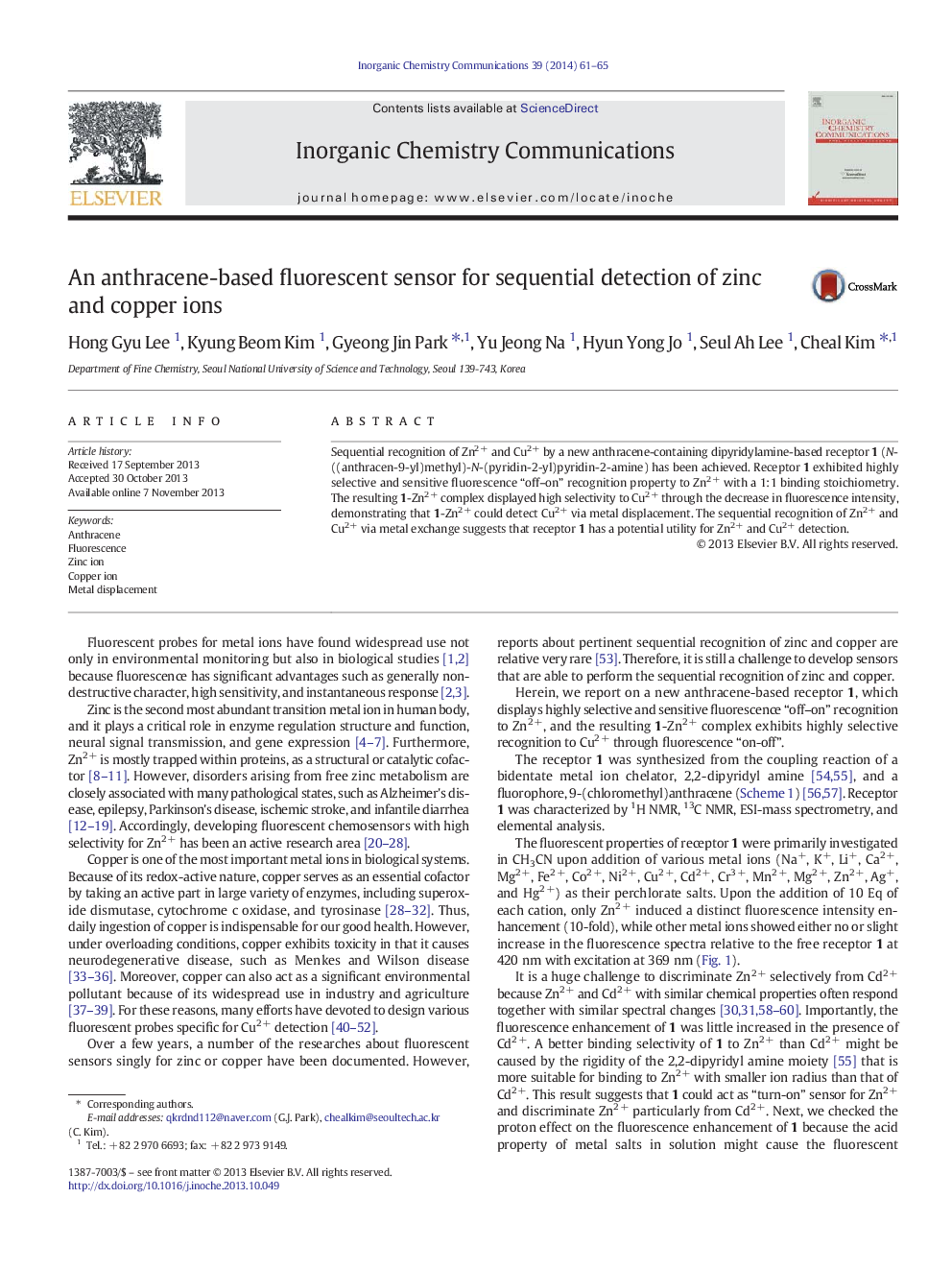| Article ID | Journal | Published Year | Pages | File Type |
|---|---|---|---|---|
| 1301685 | Inorganic Chemistry Communications | 2014 | 5 Pages |
•A new antracene-containing dipyridylamine-based receptor 1 was synthesized.•It could be used to detect Zn2 + and the formed 1-Zn2 + complex exhibited highly selective recognition to Cu2 +.•Sequential recognition of Zn2 + and Cu2 + via metal exchange was fluorescence “off–on–off” type.
Sequential recognition of Zn2 + and Cu2 + by a new anthracene-containing dipyridylamine-based receptor 1 (N-((anthracen-9-yl)methyl)-N-(pyridin-2-yl)pyridin-2-amine) has been achieved. Receptor 1 exhibited highly selective and sensitive fluorescence “off–on” recognition property to Zn2 + with a 1:1 binding stoichiometry. The resulting 1-Zn2 + complex displayed high selectivity to Cu2 + through the decrease in fluorescence intensity, demonstrating that 1-Zn2 + could detect Cu2 + via metal displacement. The sequential recognition of Zn2 + and Cu2 + via metal exchange suggests that receptor 1 has a potential utility for Zn2 + and Cu2 + detection.
Graphical abstractThe sequential recognition of Zn2 + and Cu2 + by a new antracene-containing dipyridylamine-based receptor 1 (N-((anthracen-9-yl)methyl)-N-(pyridin-2-yl)pyridin-2-amine) has been achieved. Receptor 1 exhibited highly selective and sensitive fluorescence “off–on” recognition property to Zn2 + with a 1:1 binding stoichiometry. The resulting 1-Zn2 + complex displayed high selectivity to Cu2 + through the decrease in fluorescence intensity, demonstrating that 1-Zn2 + could detect Cu2 + via metal displacement.Figure optionsDownload full-size imageDownload as PowerPoint slide
